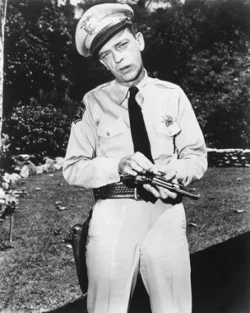Funny story; when I was a LEO I made a routine stop as a car was getting on the interstate. The driver came back totally clean but was Really nervous. We talked for a bit and I decided not to him write a ticket for running a red light. He pulled away stopped, pulled forward again, and stopped again. He jumped out of the car and started walking toward me in that really deliberate kind of pace. I took a step back, placed my hand on my weapon (no personal tazers or sprays back then) and he never broke stride. About 3 steps away he starts loudly saying thank you, thank you and reaches out and give me a big handshake. He starts walking back to his car and a P90 falls out of his pants onto the ground. He looks at me and says "you can keep that", got in his car and left. I ran the gun and it came back clean, registered to him. I held the pistol for a day and then went to the guys house to return the pistol. He explained that he was in the middle of a family dispute and had been on his way to confront his brother-in-law expecting things to get really sideways. Said he never wanted to see the pistol again. So we sat there and talked about family matters for a while and I said the only thing I can do with the gun as an officer was turn it in which would run him through some stuff he did not want. So he said "if you come back when you are off duty I will sell you the pistol for a dollar". I came back, 'bought' the pistol and we have been good friends every since.

